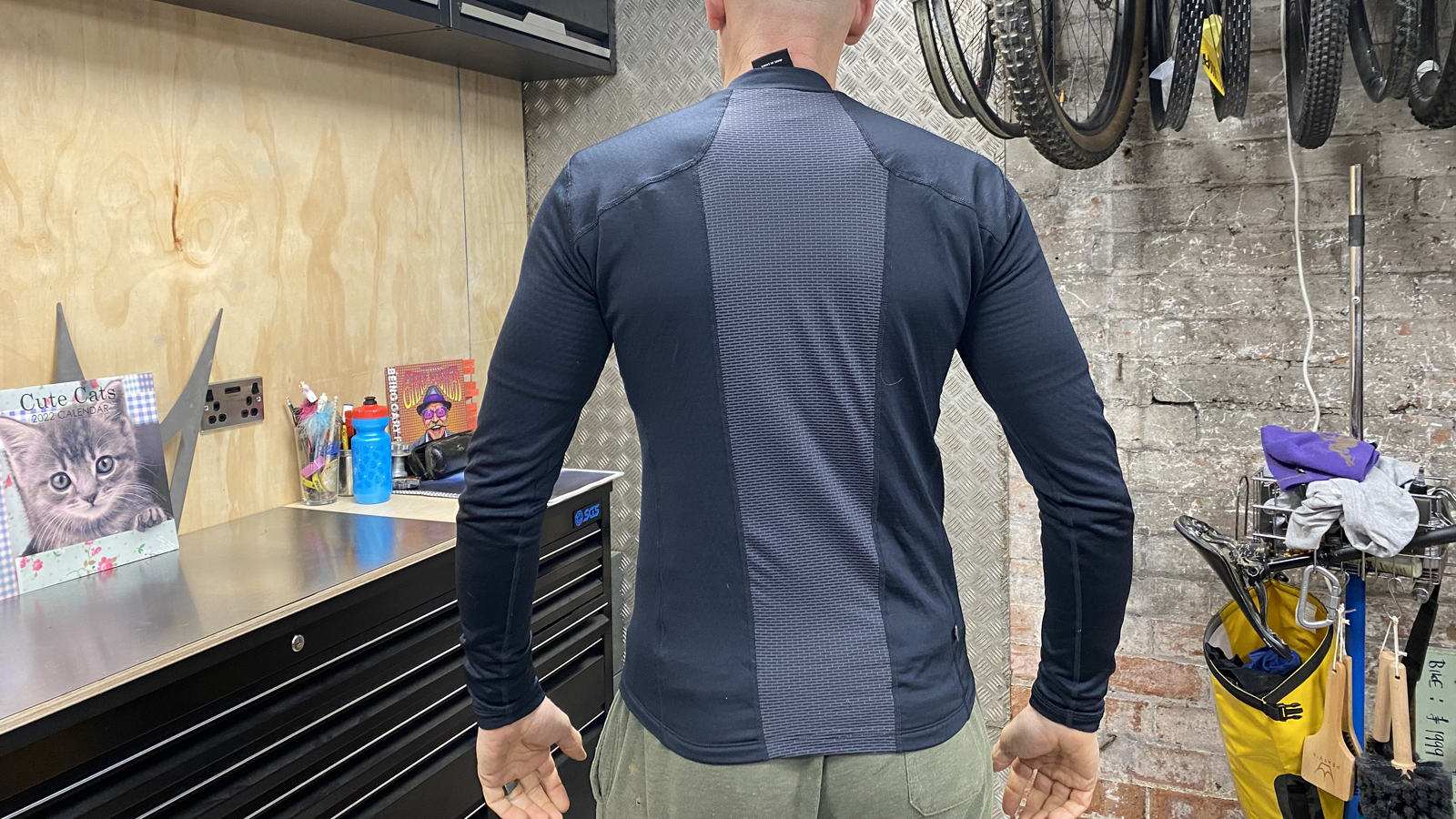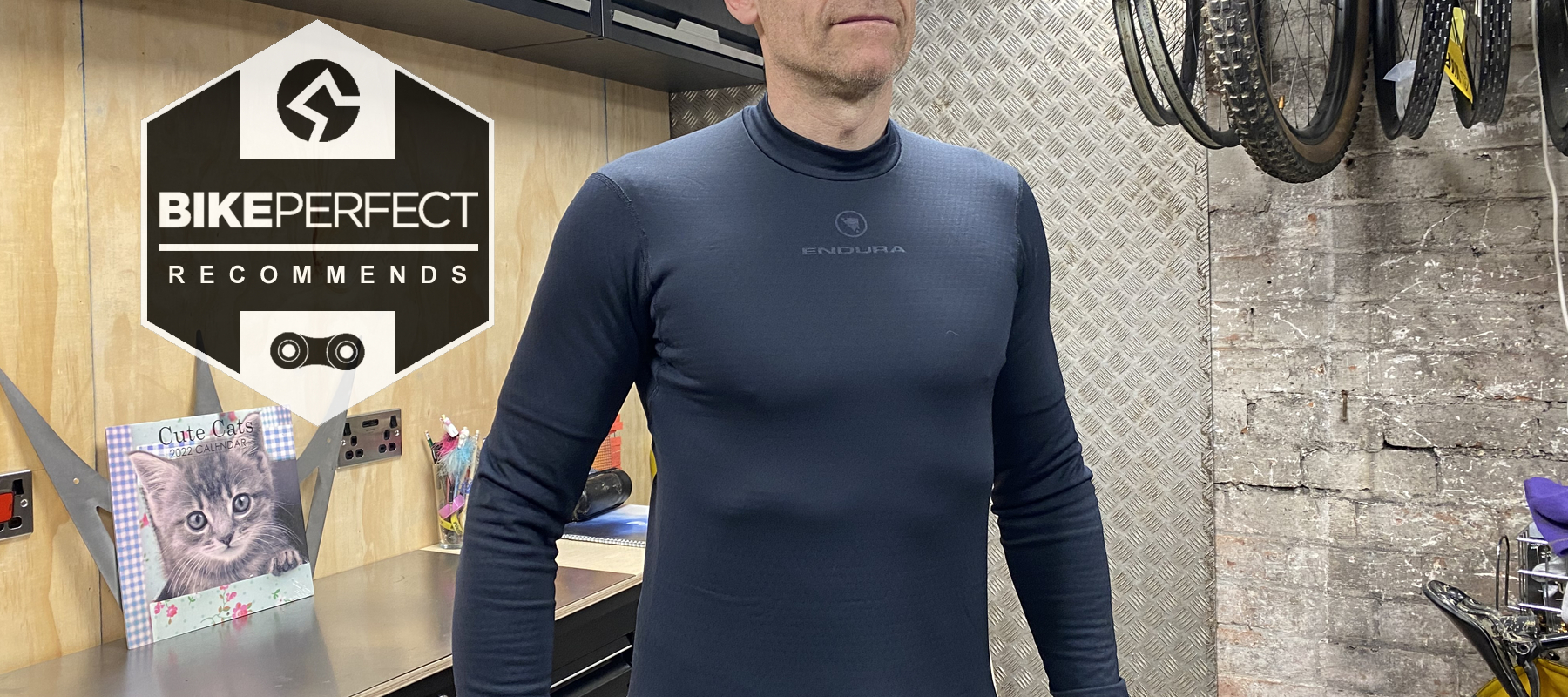Bike Perfect Verdict
Added warm air entrapment makes Endura’s Transloft base layers great for lightweight sub-shell insulation and they’re well priced too. Wicking and drying aren’t the fastest though and they need a shell to work/last best.
Pros
- +
Excellent strategic insulation
- +
Added sub-shell warmth and comfort
- +
Low weight and bulk
- +
Great value
- +
Super stretchy fit
- +
Generous length
- +
Synced back panel venting
- +
47 percent recycled
Cons
- -
Slower wicking/drying than a pure base
- -
Needs shell for warmth
- -
Threads pull easily
Why trust BikePerfect
Endura’s new Transloft base layers use a bike-specific cut and high loft material placement to put warmth where it’s needed most. Wind proofing and wicking/drying performance mean they actually work best as a superlight mid layer rather than a base layer.
For information on Bike Perfect's testing procedures and how our scoring system works, see our how we test page.
Design and performance
As the name suggests Endura’s new Transloft base layers use 47 percent recycled Primaloft Energy honeycomb fleece-backed fabric for everything but a lighter mesh spine strip. The Primaloft is doubled over for the cuff, hem, and mid-height collar too but as the fabric is so stretchy there are no worries about strangling or need for a woman’s specific cut. The arms are cut to rotate slightly forward too so there’s no armpit bunching, the flat seams are unobtrusive and arm/body lengths are long enough that if you want a really snug fit you could size down without gaps. They pack up really small for bikepacking/back pocketing too.
The honeycomb fleece backing boosts warmth by trapping hot air in the ‘cells’ and under a windproof shell the results are obviously cozy without being too roasting once you start working hard. It also adds extra space between the skin and wet shell fabrics so if they wet out or you sweat out you don’t feel as cold and clammy.
Endura’s 0-15 degrees Celsius temp range definitely seems based around a relatively steady work rate though, so take that 5 degrees Celsius or more lower if you tend to hammer rather than hibernate. It doesn’t hold the hot air as well as some more structured (and much more expensive) layers without a shell over the top though so it’s best teamed with a vented jacket (like Endura’s Pro SL 3 Season than with a full removal layering set up.

The thin back panel lines up with similar strips in other Endura gear (including the F260 Jetstream jersey) to add a minimal material exhaust panel right through to the outside world. That can backfire if the weather really turns and there’s bouncing rain driving off your back, but otherwise, the syncing is great for stopping a soggy spine.
The difference in fabric performance is clear too as the Primaloft material unsurprisingly can’t suck as much sweat off your skin as a full-contact fabric and it doesn’t seem to evaporate it out as fast either. That meant we often finished test rides wetter than we would in a conventional base layer and it took noticeably longer to dry out when sat around after a ride or when hung up to dry. The fabric also seems to snag on undergrowth/zips/velcro more easily than most so you need to be more careful with your lines and laundry loading if you don’t want it looking tatty fast. They still dry a lot quicker and need less laundry care than merino wool base layers. They work really well as a superlight mid-layer over a skimpy fast-wicking base where warmth for weight and price are excellent.
Verdict
Endura’s Transloft layers are a really well-priced mid/base layer crossover. They do a great job of adding noticeable warmth and cozy comfort under shell layers at a low weight/bulk and excellent price. They don’t wick or dry as fast full contact base layers though and they need the wind/thorn protection of a shell.
Tech Specs: Endura Transloft baselayer
- Price: Long sleeve $64.99/£39.99, Short sleeve $59.99/£34.99
- Sizes: S, M, L, XL, XXL
- Colors: Black

Guy Kesteven has been working on Bike Perfect since its launch in 2019. He started writing and testing for bike mags in 1996. Since then he’s written several million words about several thousand test bikes and a ridiculous amount of riding gear. He’s also penned a handful of bike-related books and he reviews MTBs over on YouTube.
Current rides: Cervelo ZFS-5, Specialized Chisel, custom Nicolai enduro tandem, Landescape/Swallow custom gravel tandem
Height: 180cm
Weight: 69kg

